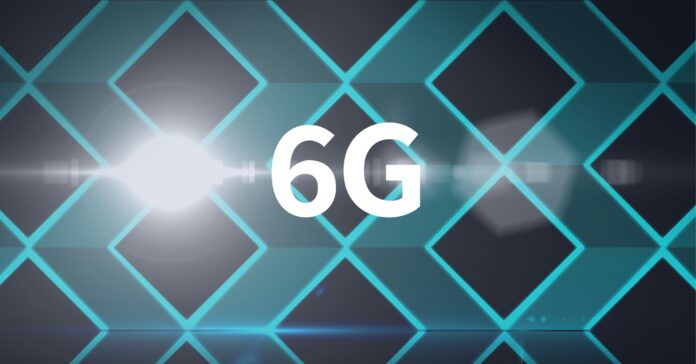Often called AI-native, many pillars of 6G are expected to incorporate this technology
6G is still very much in the R&D phase and will not be available until 2030 or later, but alas, it is quickly crowding out discussions of 5G (despite the fact that 5G has yet to really deliver on its promises, and therefore, could probably use some more discussion). In general, it has been put forth that 6G systems should be interoperable with 5G systems, highly software-based and more sustainable than its predecessor. Below, though, is a deep dive into some other emerging priorities as telcos and their partners prepare for the sixth generation of cellular technology — and spoiler alert: AI makes an appearance in all three.
6G must evolve gradually
Narothum Saxena, the vice president of technology strategy & architecture for US Cellular, told RCR Wireless that 6G must be a “gradual evolution” from 5G. He said that, previously, as the telecom industry migrated to new G’s, “inherent hardware refreshes” were triggered. “This time, our opinion is 6G must not inherently trigger a refresh of 5G RAN,” he continued. “The decision to refresh the 5G RAN hardware for operational reasons such as end of life or new capabilities should be operator-driven, independent of supporting 6G.”
5G-Advanced (5G-A) is considered a bridge between 5G and 6G. 5G-A introduces more capabilities around sensing and things like artificial intelligence (AI) and machine learning (ML), energy savings and network slicing. New use cases like extended reality (XR) and Reduced Capability (RedCap) are supported by 5G-A and will see further expansion in the 6G era. “5G Advanced builds on the existing 5G infrastructure, introducing enhancements to network capacity, performance and efficiency,” said Saxena, adding that this creates a solid foundation for 6G’s more demanding requirements.
5G-A has also kickstarted the integration of AI into the lifecycle of the network — a crucial step on the path to 6G as it builds a foundation for the AI-native environment expected in the next G.
6G must simplify the network
A universal goal for 6G is a simplified equation, explained Saxena: Network simplification equals lower operational costs plus scalable and flexible deployment models. When the NGMN Alliance Board published the “6G Position Statement: An Operator View” in 2023, the group’s Chairman and VP Group Technology at Deutsche Telekom Arash Ashouriha said: “NGMN is committed to ensuring that 6G delivers tangible benefits to end-users, simplifying network operations and ensuring sustainability, while offering compelling new experiences.” The publication lists network simplification as one of the requirements for a successful evolution to 6G.
Generative AI (Gen AI) will likely prove a powerful simplification tool in 6G as it can help operators integrate data from across the network lifecycle, most notably from the OSS systems and the BSS systems. Snowflake CTO Fawad Qureshi wrote: “By integrating data from multiple complex telecom OSS and BSS sources into a genAI model, we can now solve problems in minutes rather than days and hours.” These minutes equal less cost for the operator.
But what about the other side of the equation — scalable, flexible models? Well, network simplification will help here, too. Introducing automation through API orchestration, which automates much of network configuration, allows for more the more rapid rollout of new services and offerings. And Software-Defined Networking (SDN) — another pillar of 6G networks — will further simplify the network architecture, makes it easier for telcos to scale their operations.
6G must be secure — from outer space to deep sea
6G is expected to enable new, advanced capabilities like granular network slicing and will support the integration of terrestrial, space and subsea networks. As a result, the current 3GPP security architecture likely needs notable security upgrades. According to 6G world, the biggest security concerns in 6G include data privacy and integrity, network vulnerabilities, identity theft and fraud and advanced persistent threats (APTs), which are stealthy threat actors that gain unauthorized access to a network, remaining undetected for an extended period.
In 6G, there needs to be new authentication and cryptography systems that are capable of authenticated an identity in a network that is programmable, disaggregated and sliced. These systems must also be quantum-safe, incorporating things like Quantum cryptography, which IBM describes a “various cybersecurity methods for encrypting and transmitting secure data based on the naturally occurring and immutable laws of quantum mechanics.” According to IBM, Quantum security has the potential to “secure information in ways that were previously thought impossible,” and it already being used in some instances for the secure communication between government agencies and financial institutions.
Network slicing was introduced in 5G, but is expected to really come into play in 6G as it becomes possible to slice the network down to an individual user level. The hyper personalization of this end-to-end service-based architecture will require updated security measures like biometric authentication and other methods that prioritize flexibility without sacrificing high levels of security.
In 6G, AI will detect threats and initiate a response in real-time, reducing the overall impact of cyberattacks. Threats can be detected faster, and networks will become more resilient because they will be continuously learning and adapting.

